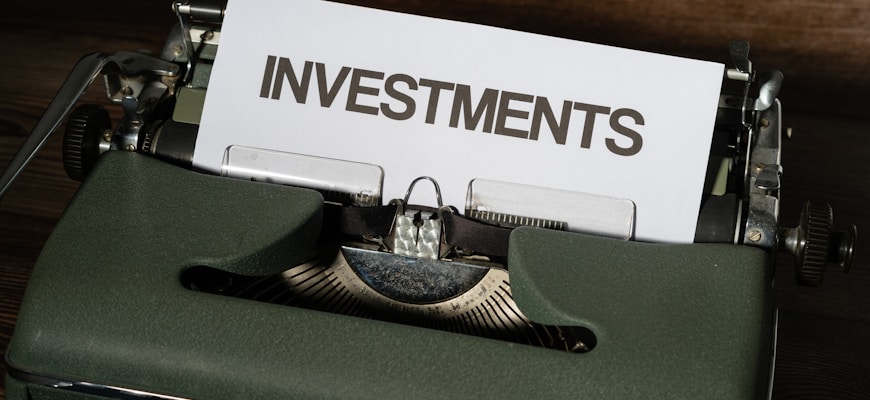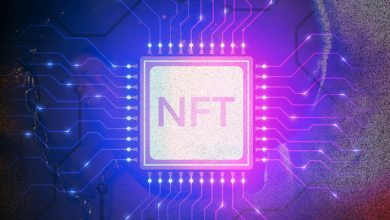Beginner’s Guide to NFTs: How to Start Investing Today

- Understanding the basics of NFTs
- Exploring the different types of NFTs available
- Setting up your digital wallet for NFT investments
- Researching popular NFT marketplaces
- Tips for identifying valuable NFTs
- Navigating the risks and rewards of NFT investing
Understanding the basics of NFTs
NFTs, or non-fungible tokens, have been gaining popularity in the digital art world. These unique tokens represent ownership of a specific piece of digital content, such as artwork, music, or videos. Unlike cryptocurrencies like Bitcoin or Ethereum, NFTs are not interchangeable with one another, making them one-of-a-kind assets.
One key aspect to understand about NFTs is that they are stored on a blockchain, a decentralized digital ledger that records transactions across a network of computers. This technology ensures the authenticity and ownership of the NFT, providing a secure way to buy, sell, and trade digital assets.
Investing in NFTs can be a lucrative opportunity for those looking to diversify their portfolio. However, it’s essential to do your research and understand the basics before diving in. Start by familiarizing yourself with popular NFT marketplaces like OpenSea, Rarible, or Foundation, where you can browse and purchase a wide variety of digital collectibles.
When buying an NFT, pay attention to factors such as the artist’s reputation, the rarity of the digital asset, and the demand in the market. Additionally, consider the long-term potential of the NFT and how it fits into your overall investment strategy.
By grasping the fundamentals of NFTs and staying informed about the latest trends in the digital art world, you can position yourself for success in this exciting and rapidly evolving market. Whether you’re a seasoned investor or a newcomer to the world of cryptocurrency, NFTs offer a unique opportunity to own and trade digital assets in a way that was previously not possible.
Exploring the different types of NFTs available
When starting to invest in NFTs, it’s essential to explore the different types available in the market. Understanding the various categories of NFTs can help you make informed investment decisions and diversify your portfolio. Some of the most common types of NFTs include:
1. Art NFTs: Art NFTs are digital artworks created by artists and minted as unique tokens on the blockchain. These NFTs can range from digital paintings to animated gifs, providing a new way for artists to monetize their work.
2. Collectibles NFTs: Collectibles NFTs are digital assets that represent unique collectible items, such as trading cards, virtual pets, or virtual real estate. These NFTs appeal to collectors who are interested in owning rare and exclusive digital items.
3. Gaming NFTs: Gaming NFTs are digital assets used within video games or online gaming platforms. These NFTs can represent in-game items, characters, or even entire virtual worlds. Gaming NFTs have gained popularity among gamers and investors alike.
4. Music NFTs: Music NFTs are digital tokens that represent ownership or rights to music tracks, albums, or other audio content. Musicians and record labels can use NFTs to sell exclusive rights to their music and connect with fans in new ways.
By exploring the different types of NFTs available, you can find opportunities to invest in assets that align with your interests and investment goals. Whether you are passionate about art, collectibles, gaming, or music, there is an NFT category that suits your preferences. Take the time to research and understand the nuances of each type of NFT before making your investment decisions.
Setting up your digital wallet for NFT investments
To start investing in NFTs, you will need to set up a digital wallet. This wallet will serve as your virtual storage for the NFTs you purchase. There are various digital wallet options available, such as MetaMask, Trust Wallet, and Coinbase Wallet. Once you have chosen a wallet, you will need to download the app or extension and create an account. Be sure to securely store your wallet’s recovery phrase, as this will be crucial for accessing your NFTs in the future. After setting up your digital wallet, you can start browsing NFT marketplaces and investing in digital assets that catch your eye. Remember to do your research and only invest what you can afford to lose in this rapidly evolving market.
Researching popular NFT marketplaces
When starting to invest in NFTs, it’s crucial to research popular marketplaces where these digital assets are bought and sold. By exploring different platforms, investors can gain a better understanding of the current trends, prices, and demand for NFTs.
Some of the most well-known NFT marketplaces include OpenSea, Rarible, and Foundation. These platforms offer a wide range of digital collectibles, art pieces, and other unique items that can be purchased using cryptocurrency.
OpenSea, one of the largest NFT marketplaces, features a diverse selection of NFTs across various categories such as art, music, domain names, and virtual worlds. This platform is user-friendly and allows investors to easily browse, buy, and sell digital assets.
Rarible is another popular NFT marketplace that focuses on empowering creators to mint and sell their own digital artwork. This platform has gained traction in the NFT space due to its innovative approach to allowing artists to monetize their creations.
Foundation is known for its exclusive selection of NFTs created by top artists and creators in the industry. This platform operates on an invitation-only basis, making it a desirable marketplace for collectors looking for high-quality digital assets.
By researching popular NFT marketplaces like OpenSea, Rarible, and Foundation, investors can stay informed about the latest trends and opportunities in the world of non-fungible tokens. Exploring different platforms can also help investors discover new artists, projects, and digital collectibles to add to their portfolios.
Tips for identifying valuable NFTs
When it comes to identifying valuable NFTs, there are a few key tips to keep in mind. One important factor to consider is the rarity of the NFT. Look for NFTs that have limited editions or unique attributes that set them apart from others. Additionally, consider the artist or creator behind the NFT. Works from well-known artists or creators may hold more value in the long run.
Another tip is to research the history of the NFT. Look into the track record of the NFT and see if it has been sold before, and if so, for how much. This can give you a better idea of the potential value of the NFT. Additionally, consider the demand for the NFT. NFTs that are highly sought after by collectors or have a strong community backing are more likely to increase in value over time.
Lastly, consider the overall quality and uniqueness of the NFT. Look for NFTs that have high-resolution images or animations, as well as those that offer interactive or immersive experiences. The more unique and well-crafted the NFT, the more likely it is to hold or increase in value. By keeping these tips in mind, you can make more informed decisions when investing in NFTs.
Navigating the risks and rewards of NFT investing
Investing in NFTs can be a lucrative opportunity for those looking to diversify their portfolio. However, it’s essential to navigate the risks and rewards before diving in headfirst. Understanding the market trends, researching the artists and projects behind the NFTs, and staying informed about the latest developments are crucial steps to take when considering NFT investments.
One of the key risks associated with NFT investing is the volatility of the market. Prices can fluctuate rapidly, making it essential to stay up-to-date with the latest trends and news. Additionally, the lack of regulation in the NFT market can make it challenging to discern valuable investments from potential scams. Conducting thorough due diligence before making any purchases is crucial to mitigate these risks.
On the flip side, NFT investing can also offer significant rewards for those who choose wisely. Investing in NFTs from reputable artists or projects with a proven track record can lead to substantial returns on investment. Additionally, the unique nature of NFTs allows for ownership of digital assets that can appreciate in value over time, making them a potentially lucrative investment opportunity.
Ultimately, navigating the risks and rewards of NFT investing requires a combination of research, due diligence, and a willingness to take calculated risks. By staying informed, understanding the market trends, and carefully selecting investments, beginners can start their NFT investing journey on the right foot.



